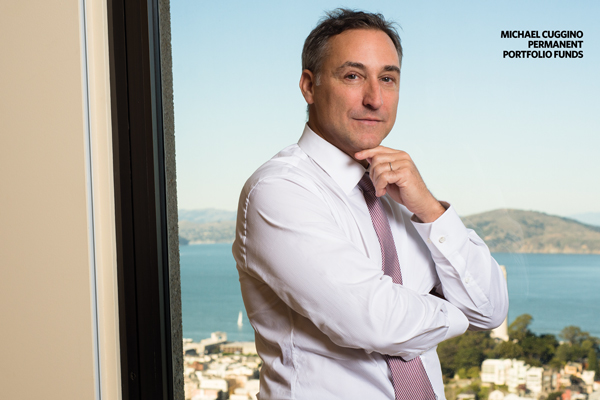It’s hard to find an investment that has stuck to its knitting as faithfully as the Permanent Portfolio Fund. Since its launch in 1982 it has invested in a consistent mix of non-correlated asset classes including U.S. Treasurys, stocks, precious metals and Swiss government bonds, regardless of market conditions or sentiment. Its managers have used the same asset allocation model as a blueprint for nearly 35 years, with a goal of fighting inflation and providing low-volatility ballast to portfolios driven largely by stock market returns.
A Turning Tide?
“Whether it’s surprise election results or football games, people have trouble predicting the future with any consistency,” says Michael J. Cuggino, who has managed the fund since 2003. “Permanent Portfolio is designed to avoid human failures of prediction through a consistent, diversified process.”
The fund has succeeded in its mission to beat inflation over the long term. As of September 30, it had an annualized five-year return of 2.60%, while its inflation bogey, the Citigroup 3-Month Treasury Bill Index, saw 0.08%. Over 10 years it returned 5.67%, while the index returned 0.84%. The S&P 500 index had higher five-year annualized returns of 16.37% and 10-year returns of 7.24%, but it had much greater volatility.
The atypical structure of the portfolio eludes easy categorization. Cuggino says some investors think of it as a core holding, and use specialized investments around it. Others put it in their alternative basket, or view it as more of a fixed-income investment because of its low volatility.
“People should think of us as a low volatility anchor product,” he says. “It’s kind of a hedging strategy, only a lot cheaper than most.” (The fund’s expense ratio for Class I shares is 0.80%.)
Over the years, the fund has moved in and out of fashion as the economy and markets have shifted gears. During the 1980s, its defensive posture and low volatility offered a shelter in the storm of stock market chaos and persistent inflation that prevailed at the time. But during the bull market of the 1990s, its heavy presence in hard assets and commodity stocks seemed as outdated as the long lines at the gas pump and soaring interest rates that helped inspire its creation.
Times of crisis have brought out its best colors. In 2008, it was down just 8.36% while its Morningstar target risk category lost 18.61% and the S&P 500 lost 37%. During the credit crisis that spanned August 2007 to September 2009, a $10,000 investment in the fund would have grown to $11,403, while an investment in the S&P 500 would have dropped to $7,648. In the dot-com bust from April 2000 until March 2003, an investor in the fund would have made $2,110, while an index investor would have lost more than $4,000.
Between 2008 and 2012, the fund’s strong performance in difficult markets attracted hordes of investors, and by the end of 2012 its assets had ballooned to more than $17 billion. But the wind shifted in 2013, when a correction in precious metals and commodity prices, along with stalling bond prices, led to a drop of 2.02%, followed by a return of negative 0.82% in 2014 and negative 6.58% in 2015. With the bull market in stocks magnifying the disappointing three-year performance, investors abandoned the fund in droves, and by the end of 2013 Permanent Portfolio had shed half its assets.
Short-term thinking and performance chasing no doubt hastened the bloodletting. “We were down around 9% over a three-year period, yet we lost over 80% of our assets,” recalls the 53-year-old Cuggino. “During the peak years, I warned people not to get used to the kinds of numbers the fund was generating.”
In 2012, he says, one investor asked him why the fund’s return was so much lower than that of the S&P 500 that year. To him, it sounded like a warning that perhaps a lot of shareholders didn’t really understand the fund and its purpose in investors’ portfolios. “We weren’t doing anything other than what we had always done, but investor expectations just got way ahead of what we are about. There are periods when the fund doesn’t do much, and that makes people frustrated. We will never outperform equities in strong bull markets. But over the long term, the fund has done its job.”
The tide appeared to turn in 2016 when the fund rose 14% during the first nine months of the year, when the S&P 500 rose only 8%. Cuggino attributes the solid performance to the fund’s strength in market environments where there is mixed performance in various asset classes rather than in bull markets of just stocks or bonds.
Both of those asset types, he says, are very richly priced. In the stock market, earnings growth has slowed for most U.S. companies, and it remains to be seen whether it will pick up again. And interest rates are so low that bonds have more room on the downside than the upside.
Keeping The Faith
January 3, 2017
« Previous Article
| Next Article »
Login in order to post a comment








